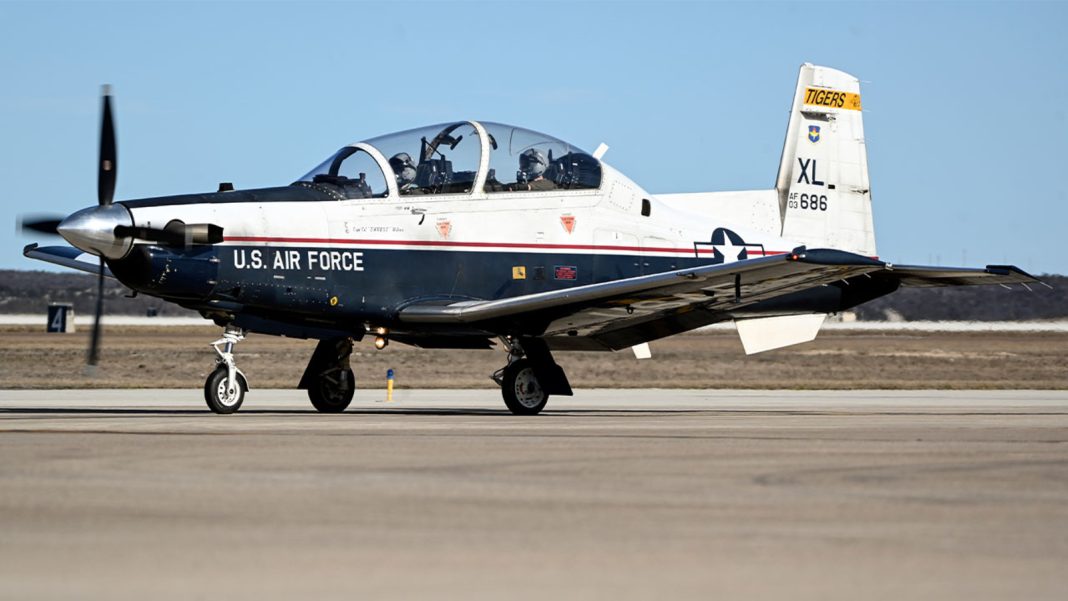Title: Air Force Instructor Pilot Killed in Tragic Ejection Seat Incident at Texas Military Base
Introduction:
A tragic incident unfolded at Sheppard Air Force Base in Wichita Falls, Texas, as an Air Force instructor pilot lost his life when the ejection seat of the T-6A Texan II aircraft activated prematurely on the ground. This article delves into the details surrounding the accident, sheds light on the T-6A Texan II aircraft, explores the purpose and function of ejection seats, and highlights previous incidents where ejection seats played a critical role.
The Ejection Seat Incident:
On Monday, an Air Force instructor pilot was seated in a T-6A Texan II aircraft when the ejection seat unexpectedly activated during ground operations. The pilot was immediately rushed to a hospital but tragically succumbed to his injuries on Tuesday. The Air Force has chosen to withhold the pilot’s name until next of kin have been notified.
Understanding the T-6A Texan II:
The T-6A Texan II is a vital single-engine, two-seater aircraft used for primary training purposes by the Air Force, Navy, and Marine Corps pilots. During training flights, instructors occupy either the front or back seat, both equipped with lightweight Martin-Baker ejection seats. The activation of these seats depends on a handle located on the seat.
Inspection and Potential Defects:
In 2022, a comprehensive inspection revealed potential defects with one component of the ejection seat’s cartridge actuated devices (CADs) in the T-6 fleet, as well as in numerous other Air Force, Navy, and Marine Corps jets. As a result, these jets were grounded, and inspections were carried out. In some cases, the CADs were replaced to ensure the safety of pilots.
The Function of Ejection Seats:
Ejection seats are renowned for saving pilots’ lives in dire situations. When activated, the cartridge within the ejection seat explodes, initiating the ejection sequence. While they have a proven track record of success, there have been instances of ejection seat failures during critical moments in aircraft accidents.
Previous Incidents Highlighting Ejection Seat Failures:
Ejection seat failure was identified as a contributing factor in the tragic F-16 crash that claimed the life of 1st Lt. David Schmitz in June 2020. Moreover, in 2018, the crew of a B-1 bomber faced a life-or-death situation when one ejection seat indicated failure while their aircraft was engulfed in flames. In an act of remarkable bravery, the crew decided to stay on board and successfully landed the plane, saving all their lives.
Conclusion:
The Air Force community mourns the loss of an instructor pilot in this devastating ejection seat incident. As investigations continue, it is crucial to prioritize safety measures and ensure thorough inspections and maintenance of ejection seats. These incidents underscore the risks faced by pilots and the critical importance of reliable and effective ejection seat systems. The courage displayed by the B-1 bomber crew serves as a testament to the unwavering dedication and commitment of military personnel, even in the face of life-threatening situations.


